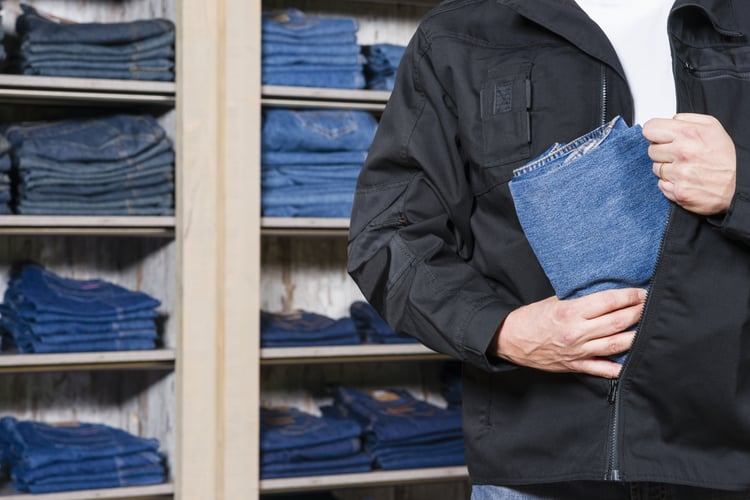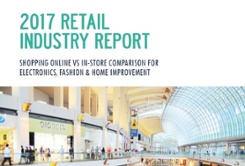Consumers and consumer rights groups are calling foul after discovering that many of the nation’s top retailers—with the help of Irvine-based firm The Retail Equation—keep a database of customer’s personal information and transaction history in order to suss out and reject fraudulent returns. Though TRE, described as a credit bureau for retail returns, has not (and will not) release its client list, they do claim to work with 11 of the nation’s top-50 retailers. Various outlets have constructed a partial listing, including: CVS, Sephora, Dick’s Sporting Goods, JC Penny, The Home Depot, Victoria’s Secret, Best Buy, and Nike.
Walking a fine line between fostering a positive customer experience and preventing outright theft, retailers find themselves in a tough position, both operationally and in terms of public relations. So let’s make some sense out of this retail market research in action, understanding the types of fraud the system endeavors to prevent and why, how it actually functions day-to-day, and ultimately how the system affects customer experience and loyalty.
Big Fraud, Big Data
Though each retailer creates their own unique policy, here is a rough approximation of how it works: When a customer makes a return, retailers swipe their identification to make a unique record of their return behavior and add to that record with each subsequent return. The system analyzes each transaction for frequency, cost, and time to determine if the return should be processed or denied as likely fraudulent. Each retailer sets the threshold for acceptable returns and TRE promises it does not distribute data between its retail clients—what the system learns at Victoria's Secret remains Victoria’s secret and isn't shared with Dick’s. According to the firm, only 1% of returns are denied, and only a fraction of those are denied in error.
Nonetheless, consumer rights advocates are already saying it’s wrong. Ed Mierzwinski of the U.S Public Interest Research Group, for example, did not mince words: “There should be no secret databases. That’s a basic rule of privacy practices. Consumers should know that information is being collected about them.”
And it’s not just organizations balking at the intrusion. A trip to TRE’s Yelp page—keep in mind that TRE is not even customer-facing—reveals a one-star rating and thread of criticism ranging from the justifiably concerned to the utterly paranoid.
In defending the policy, Home Depot’s spokesman Stephen Holmes may have exaggerated the point a bit, but his broader point is taken: “This isn’t only about protecting our bottom line. It’s about protecting our communities too. We know from working with law enforcement at the state and federal levels that organized retail crime is feeding other crimes, such as drug trafficking and even terrorism, in some cases.”
While we will leave it to law enforcement to determine if return fraud is indeed funding terrorism, connections to drug addicts are undeniable (more to come on that later) and any easy, repeatable crime will inspire increasingly organized efforts to maximize its dividends. That's just common sense.
Return to the Scene of the Crime
Return fraud is serious business—both pervasive and concealed, it is hard to even quantify how much it costs retailers each year. Different outlets have different numbers; according to NBC it is $22.9 billion/year, others say ‘only’ $10 billion/year. That’s a roughly $12 billion difference between the high and low end, but regardless, any number with “billion” attached to it is going to be a problem.
The actual mechanics of return fraud vary, but there are some tried and true favorites scammers regularly employ. One tactic is to scour parking lots, searching for receipts with expensive (and preferably small) item. Once such a receipt is secured, fraudsters then steal the item, return it to the store with the discovered receipt, and get a cash payment for merchandise they never purchased.

Criminals have also been known to switch tags on items that appear similar but vary in cost. They purchase the expensive item at the cheaper item’s price, and then return the expensive item, without a receipt, for a refund. Often, such blatant tactics are the efforts of drug addicts funding their next buy but return fraud has extended into the mainstream.
There is, of course, wardrobing—an increasingly common practice among common people (who wouldn't consider themselves criminals) who purchase, wear, and then return outfits to stores. A no-cost way to always be seen in something current and new, wardrobing has become a common enough practice that Bloomingdales has put its foot down.
“We’ve seen a change in the culture in the last 15 years where people are more willing to sort of cheat,” notes ASU professor Dale Rogers. Rogers goes on to tell an anecdote that illustrates a broader cultural shift: “There’s the joke about the ‘Home Depot rental,’ where somebody will buy a leaf blower and pass it along the cul-de-sac and then take it back when they’re done. So it used to be that that was not socially acceptable, but it seems like it is now.”
I am Consumer, Hear Me Roar
Rogers believes TRE’s system is smart enough to avoid false flags, “I think you would have to make returns multiple times a week for them to say you can’t do it anymore.”
As reported by NBC news, however, the system sometimes leaves something to be desired. Recently, Best Buy denied Jake Zakhar’s innocuous return of 3 cell phone cases, claiming that TRE’s system had flagged him as a potential perpetrator of return fraud after he had made a few returns around Christmas the year before. Jake immediately took to social media, tweeting, “I suppose losing me who just spent $5,000 on appliances over 3 cell phone cases is worth it. Banned from returns for a year. You lost a high dollar purchaser permanently over your lame system.”
Best Buy’s response was a master class in sanitary corporate speak and demonstrates the tight spot loss prevention policies can put PR teams into: “On very rare occasions—less than one-tenth of one percent of returns—we stop what we believe is a fraudulent return. Fraud is a real problem in retail, but if our systems aren’t as good as they could be, we apologize to anyone inappropriately affected.”
Best Buy is, of course, no stranger to return controversies, having been embroiled in a 2011 lawsuit after a customer contested the chain’s right to demand and process identification before running a return. The courts sided with Best Buy, granting retailers legal sanction to track customers and their returns. Furthermore, TRE clients include fine-print language on their receipts advising consumers of the data collection, return tracking process. So they are on solid legal ground, but perhaps not in the court of public opinion.
Dick’s Sporting Goods has recently come under fire for similar practices. Bob Bernadino asked his Twitter followers, “Anyone ever had a bad experience with a retailer when returning and ran into a third party service called the Retail Equation? I just did and may never shop at Dick’s Sporting Goods again. Ugh. Would love to hear from you if you have.”
Retail Market Research: Forever 21’s Catch-22?
Though fraud may be among the world’s oldest profession, return fraud really began in earnest while companies expanded their return policies as a customer experience differentiator. From L.L. Bean’s recently reversed no-questions-asked policy to Amazon and Nordstrom’s continued the-customer-is-always-right policy, retailers have sought to make returns as effortless as possible in an increasingly omnichannel world.

True story: this blogger’s mother once ran a pair of sunglasses through the washing machine. She then took them, in roughly seven pieces, back to Nordstrom (where she had purchased them over a year before) placed them on the glass counter and said, simply, “They’re broken.” The return was processed in less than one minute. She is a loyal Nordstrom customer to this day and not just because the clothes are so darn cute.
The conflicting impulses of making returns both effortless and secure has put retailer into a Catch-22. Finding the balance between customer experience and loss prevention is not a new problem and requires multiple branches of an organization to come together for a common solution. Frankly, it’s the kind of situation that requires a strategic consulting firm, one who can run market research and help merge multiple and often conflicting perspectives with a data-driven approach.
As big data and analytics have come to guide more and more business decisions, companies have collected and purchased more and more information about everyday consumers. The mob at the gates of Zuckerberg Xanadu should be all the proof we need that the backlash is upon us, and companies increasingly risk becoming a symbol of corporate intrusion if they do not appropriately implement and explain their data collection programs.
So with TRE, while saving untold fortunes in loss, retailers risk slowly eroding consumer trust, and remain just one highly publicized incident away from disaster (imagine if accusations of race/class/gender profiling get traction).
With something this delicate, it pays to pay an expert.


